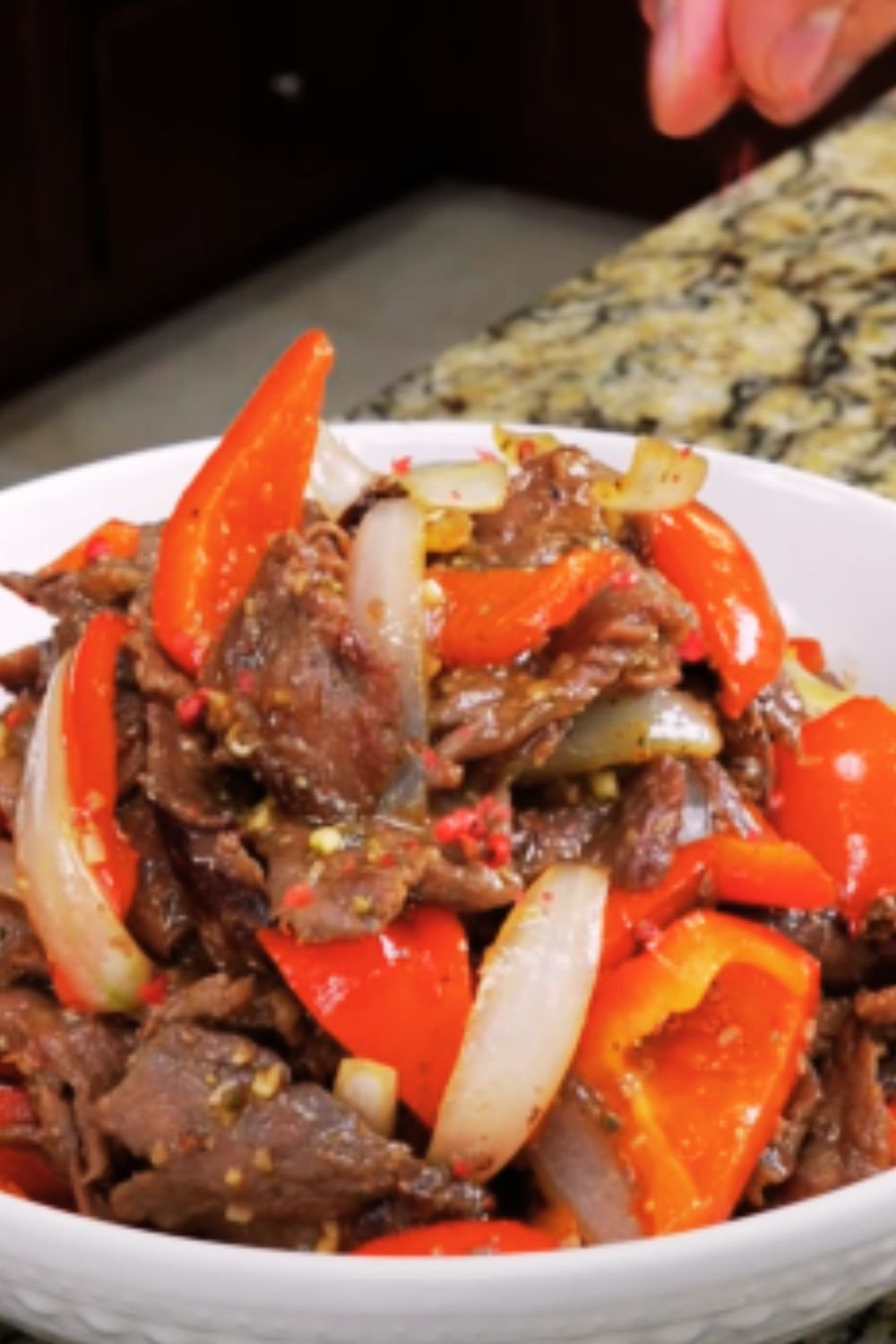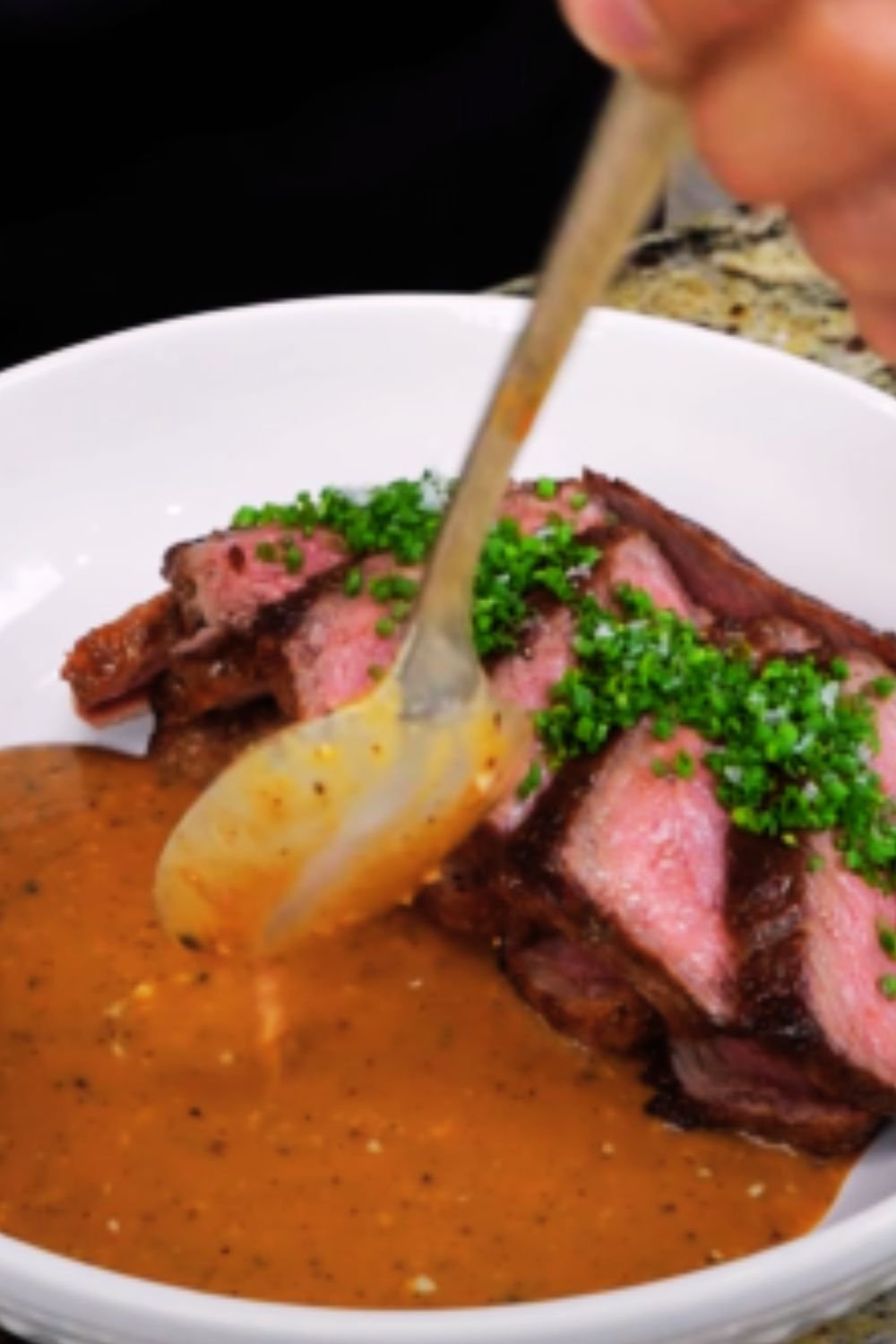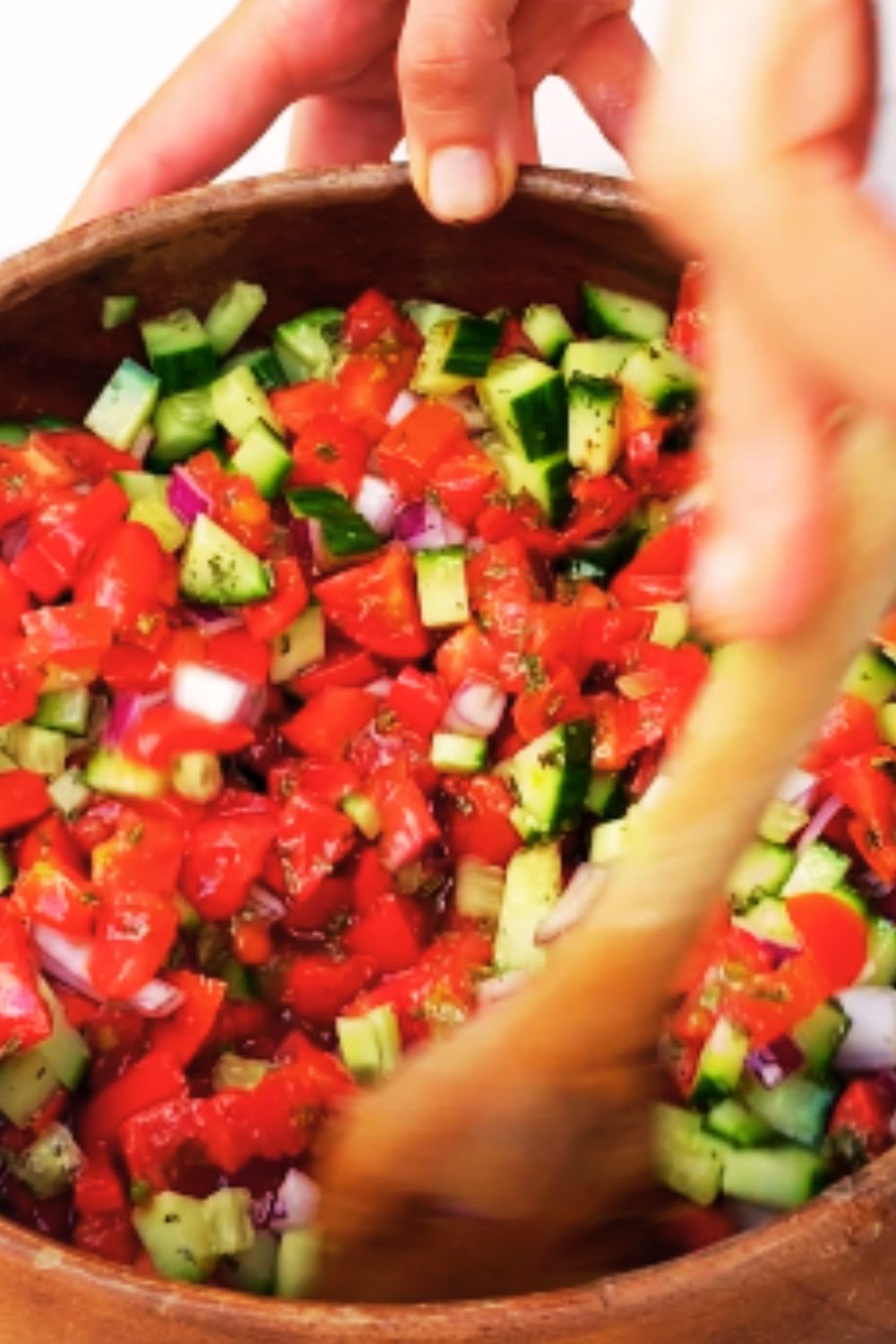There’s something magical about the sizzle of a perfectly cooked pepper steak that transports me straight to the bustling streets of China. The aromatic blend of tender beef strips, crisp bell peppers, and caramelized onions coated in a savory sauce has been a staple in my kitchen for years. Today, I’m excited to share my foolproof Chinese Onion Pepper Steak recipe that promises restaurant-quality results right in your home kitchen.
The Story Behind the Dish
My journey with this recipe began during a culinary tour through Sichuan province. I was mesmerized by how local chefs transformed simple ingredients into extraordinary dishes using precise techniques and balanced flavors. The pepper steak I tasted there was nothing like the Americanized versions I’d encountered before—it was vibrant, boldly spiced, and showcased the beef’s natural flavors without drowning them in sauce.
After several attempts to recreate that memorable dish, I’ve refined this recipe to capture the essence of authentic Chinese cooking while adapting it for ingredients readily available in Western supermarkets. What makes this dish special is the perfect balance between the tender beef, sweet onions, and crisp peppers, all enveloped in a sauce that’s just the right consistency—not too thick, not too thin.
Essential Ingredients for Authentic Flavor
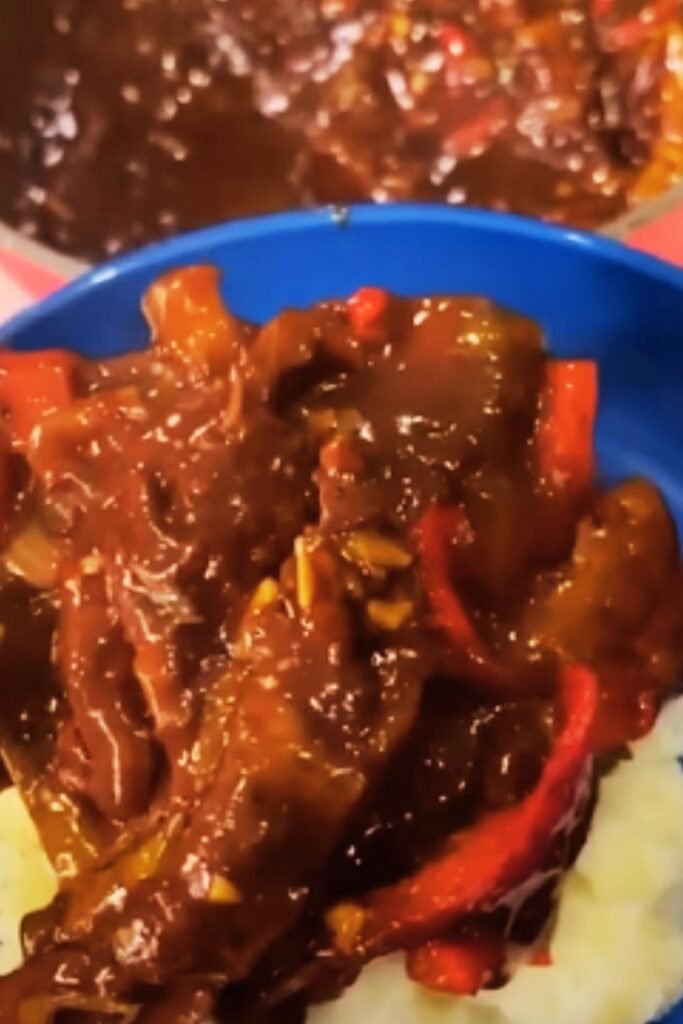
The secret to exceptional Chinese pepper steak lies in the quality of ingredients and preparation techniques. Here’s what you’ll need:
The Protein
- Flank steak or sirloin: 1.5 pounds (680g), sliced thinly against the grain
- Why it matters: Cutting against the grain shortens the muscle fibers, resulting in more tender meat
The Vegetables
- Bell peppers: 2 large (1 green, 1 red), julienned
- Onions: 2 medium, sliced into thin wedges
- Scallions: 4, cut into 2-inch segments
- Garlic: 4 cloves, minced
- Ginger: 1 tablespoon, freshly grated
The Marinade
- Soy sauce: 3 tablespoons
- Shaoxing wine: 2 tablespoons (can substitute dry sherry)
- Cornstarch: 2 teaspoons
- Baking soda: ¼ teaspoon (the secret to tender restaurant-style beef)
- White pepper: ¼ teaspoon
- Sugar: 1 teaspoon
The Sauce
- Oyster sauce: 2 tablespoons
- Dark soy sauce: 1 tablespoon
- Light soy sauce: 1 tablespoon
- Chicken stock: ½ cup
- Sesame oil: 1 teaspoon
- Cornstarch slurry: 1 tablespoon cornstarch mixed with 2 tablespoons water
Aromatics and Finishing Touches
- Black bean sauce: 1 tablespoon (optional but recommended for depth)
- Toasted sesame seeds: 1 tablespoon
- High-smoke-point oil: 3 tablespoons (peanut or avocado oil work well)
Preparation Techniques That Make a Difference
The difference between a good pepper steak and a great one often comes down to technique. Here are the critical steps that elevate this dish:
Beef Preparation: The Velveting Method
One technique that truly transformed my homemade Chinese dishes is “velveting” the meat—a process Chinese chefs use to ensure incredibly tender beef in stir-fries. Here’s how to do it:
- Slice your beef against the grain into thin strips (about ¼-inch thick)
- Mix all marinade ingredients in a bowl
- Add the beef, massage gently with your hands to ensure even coating
- Let it rest for at least 30 minutes (or up to 4 hours in the refrigerator)
- Before cooking, bring the meat to room temperature if refrigerated
This process not only seasons the meat but also changes its texture, resulting in that melt-in-your-mouth tenderness you’ve experienced in high-quality Chinese restaurants.
Mis en Place: The Key to Stir-Fry Success
Stir-frying happens quickly, so having everything prepared and within reach is essential:
- Combine all sauce ingredients (except the cornstarch slurry) in a small bowl
- Prepare the cornstarch slurry in a separate container
- Arrange your prepped vegetables in groups on a large plate
- Have your marinated beef drained and ready
- Keep cooking utensils nearby—a wok spatula or wooden spoon is ideal
Step-by-Step Cooking Process
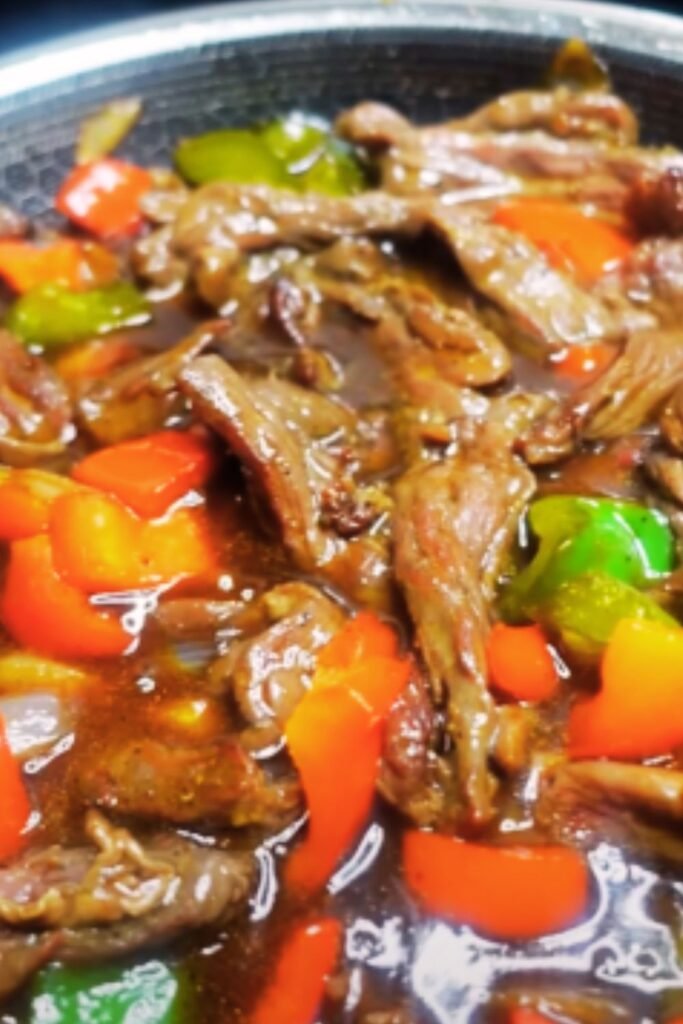
Phase 1: Searing the Beef
- Heat your wok or large skillet until it’s smoking hot
- Add 2 tablespoons of oil, swirling to coat the surface
- Add the marinated beef in a single layer (you may need to do this in batches)
- Let it sear for 30 seconds without disturbing
- Quickly stir-fry for another 1-2 minutes until the beef is 80% cooked
- Remove and set aside on a plate
Phase 2: Cooking the Vegetables
- Add the remaining oil to the same wok
- Add ginger and garlic, stir-frying for 15 seconds until fragrant
- Add onions and stir-fry for 1 minute until they begin to soften
- Add bell peppers and stir-fry for another 2 minutes
- The vegetables should be crisp-tender, not soft
Phase 3: Bringing Everything Together
- Return the beef to the wok with any accumulated juices
- Add the sauce mixture and toss to combine
- Bring to a simmer and cook for 1 minute
- Add the scallions and stir to incorporate
- Pour in the cornstarch slurry while stirring constantly
- Cook until the sauce thickens to your desired consistency (about 30 seconds)
- Remove from heat and drizzle with sesame oil
- Garnish with toasted sesame seeds
Nutritional Profile
Understanding the nutritional content helps you make informed decisions about how this dish fits into your overall diet. Here’s a breakdown per serving (recipe serves 4):
| Nutrient | Amount | % Daily Value* |
|---|---|---|
| Calories | 385 | – |
| Protein | 32g | 64% |
| Total Fat | 21g | 27% |
| Saturated Fat | 5g | 25% |
| Cholesterol | 65mg | 22% |
| Carbohydrates | 15g | 5% |
| Dietary Fiber | 3g | 11% |
| Sugars | 5g | – |
| Sodium | 980mg | 43% |
| Potassium | 590mg | 17% |
| Iron | 3.5mg | 19% |
| Vitamin C | 75mg | 83% |
| Vitamin A | 1250IU | 25% |
*Percent Daily Values are based on a 2,000 calorie diet
Note: You can reduce sodium content by using low-sodium soy sauce and broth.
Variations to Explore
The beauty of Chinese pepper steak is its versatility. Here are some variations I’ve experimented with:
Protein Alternatives
- Chicken breast: Slice thinly and reduce cooking time to prevent drying
- Pork tenderloin: Works beautifully with the same marinade
- Firm tofu: Press well and pan-fry first for a vegetarian option
- Shrimp: Skip the marinade except for a light coating of cornstarch
Vegetable Additions
- Snow peas: Add during the last minute of cooking
- Mushrooms: Shiitake or button mushrooms add earthiness
- Water chestnuts: For added crunch
- Baby corn: Adds sweetness and interesting texture
Sauce Variations
- Spicy version: Add 1-2 teaspoons of chili oil or sambal oelek
- Sweeter profile: Increase sugar to 2 teaspoons and add 1 tablespoon of hoisin sauce
- Tangy twist: Add 1 tablespoon of rice vinegar to the sauce
Common Challenges and Solutions
| Challenge | Cause | Solution |
|---|---|---|
| Tough beef | Improper slicing or insufficient marinating | Slice thinly against the grain and don’t skip the baking soda in the marinade |
| Watery sauce | Overcrowded pan or wet vegetables | Cook in batches and thoroughly dry vegetables after washing |
| Vegetables too soft | Overcooked or cut too small | Cut larger pieces and cook for less time |
| Bland flavor | Insufficient seasoning or low-quality ingredients | Use high-quality soy sauce and don’t skimp on aromatics |
| Burning ingredients | Pan too hot or ingredients not moving enough | Adjust heat as needed and keep ingredients moving |
Serving Suggestions
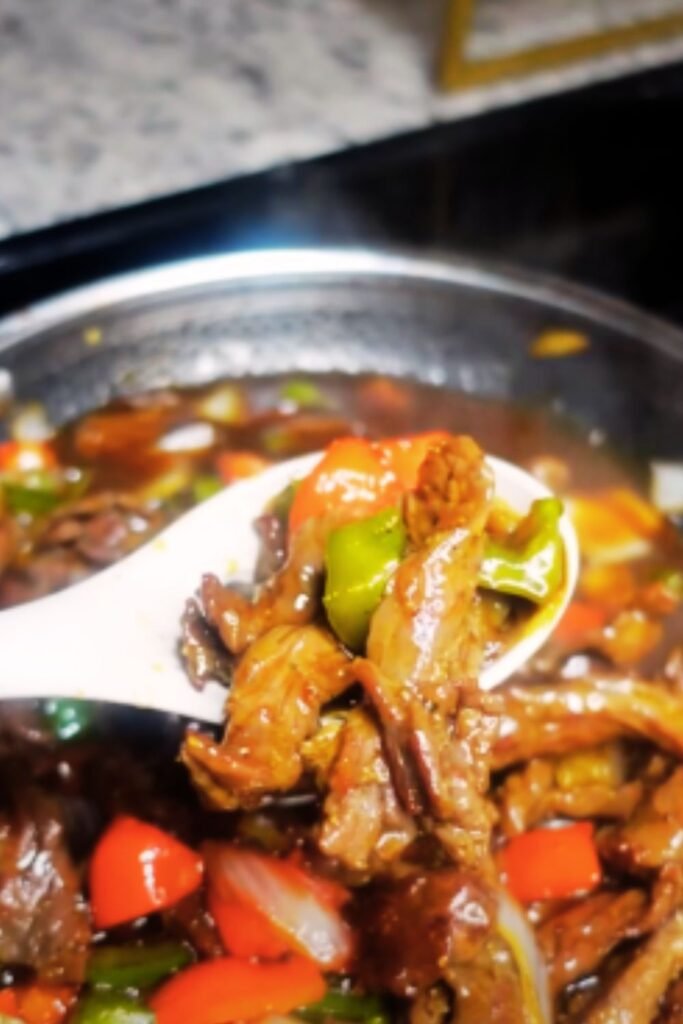
Chinese Onion Pepper Steak pairs wonderfully with:
- Steamed jasmine rice: The classic choice that allows the sauce to shine
- Cauliflower rice: For a lower-carb alternative
- Noodles: Udon or lo mein noodles make for a heartier meal
- Lettuce cups: For a lighter, fresh presentation
I like to serve additional condiments on the side, such as chili oil, black vinegar, or extra soy sauce, allowing everyone to adjust flavors to their preference.
Make-Ahead and Storage Tips
This dish is perfect for meal prep with these guidelines:
Preparation
- Slice beef and vegetables: Up to 2 days ahead, stored separately in airtight containers
- Prepare marinade and sauce: Up to 3 days ahead, refrigerated
- Marinate beef: Up to 24 hours in advance (though 30 minutes is sufficient)
Storage
- Refrigeration: Store leftovers in an airtight container for up to 3 days
- Freezing: While possible, textures may change; best consumed within 1 month
Reheating
- Stovetop: Preferred method—quickly stir-fry in a hot pan with a splash of water
- Microwave: Use 70% power and stir halfway through to prevent overcooking
Cultural Context and Appreciation
Chinese pepper steak represents the beautiful simplicity of Cantonese cooking, where fresh ingredients and quick cooking techniques preserve natural flavors and textures. While this recipe has been adapted for home cooks outside of China, I’ve tried to maintain the essence of traditional techniques like velveting and proper high-heat stir-frying.
The dish’s popularity in both China and abroad speaks to its balanced flavors and approachable nature. In traditional Chinese culture, the colorful ingredients symbolize prosperity and good fortune, making it a popular choice for celebrations and family gatherings.
Troubleshooting Guide
Even experienced cooks encounter challenges. Here’s how to address common issues:
Why is my beef chewy?
- Issue: Likely cut with (not against) the grain or overcooked
- Fix: Ensure proper cutting technique and brief cooking time
Why is my sauce not thickening?
- Issue: Cornstarch not properly activated or insufficient quantity
- Fix: Mix cornstarch thoroughly with cold water before adding, and ensure the mixture reaches a simmer
Why are my vegetables soggy?
- Issue: Overcooking or improper heat management
- Fix: Use high heat and quick cooking times; consider blanching and shocking peppers before stir-frying
Questions and Answers
Q: Can I make this dish with pre-sliced beef from the grocery store?
A: Yes, you can use pre-sliced beef labeled as “stir-fry beef” to save time. However, these cuts are often not sliced against the grain, which may result in slightly tougher meat. I still recommend using the velveting technique with the marinade to improve tenderness.
Q: Is there a substitute for oyster sauce if I have a shellfish allergy?
A: Absolutely! You can use vegetarian oyster sauce (made from mushrooms), hoisin sauce, or a combination of additional soy sauce with a bit of sugar. Each will change the flavor profile slightly, but will still deliver a delicious result.
Q: How spicy is this dish traditionally?
A: Authentic Chinese pepper steak isn’t typically spicy hot—the “pepper” refers to bell peppers, not black pepper or chili peppers. However, regional variations exist, and you can certainly add heat with fresh chilies, chili oil, or crushed red pepper flakes to taste.
Q: Can I make this in a regular pan if I don’t have a wok?
A: Yes, a large, heavy-bottomed skillet (preferably cast iron) works well as an alternative to a wok. The key is ensuring it can get very hot. You might need to cook in smaller batches to maintain proper heat and prevent steaming.
Q: How do I know when the beef is properly cooked?
A: For stir-fry, beef should be just cooked through—still slightly pink in the center when you remove it from the first cooking phase, as it will continue cooking when returned to the wok with the sauce. Overcooking leads to tough, dry meat.
A Personal Note
What I love most about this Chinese Onion Pepper Steak recipe is how it brings together simple ingredients to create something truly spectacular. There’s something deeply satisfying about mastering the techniques that transform everyday beef and vegetables into a dish worthy of the finest Chinese restaurants.
I encourage you to embrace the process—from the careful slicing and marinating to the exciting, fast-paced stir-frying. The more you make this dish, the more intuitive it becomes, allowing you to adapt it to your preferences and available ingredients.
Remember that the essence of great Chinese cooking lies in balance—of flavors, textures, and techniques. This recipe honors that tradition while making it accessible to home cooks everywhere. I hope it brings as much joy to your table as it has to mine!

